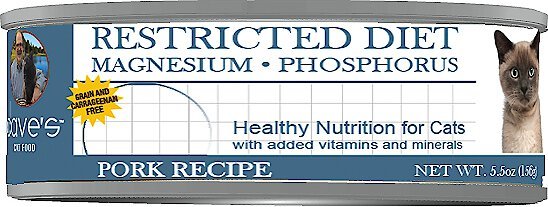4health with Wholesome Grains Adult Lamb and Rice Formula Dry Dog Food
Real protein and wholesome ingredients make up the 4health with Wholesome Grains Adult Lamb and Rice Formula Dry Dog Food. This dog food is ideal for all breeds and life stages and helps your pet maintain a lean, healthy body. Antioxidants help support your dog’s immune system, while probiotics promote optimal digestion. There’s also ample glucosamine to support joint health. To top it all off, the kibble boasts a delicious lamb and rice flavor that’s highly attractive to most dogs. Try a bag of 4health wholesome dry dog food today. Made in USA.
Real protein and wholesome ingredients make up the 4health with Wholesome Grains Adult Lamb and Rice Formula Dry Dog Food. This dog food is ideal for all breeds and life stages and helps your pet maintain a lean, healthy body. Antioxidants help support your dog’s immune system, while probiotics promote optimal digestion. There’s also ample glucosamine to support joint health. To top it all off, the kibble boasts a delicious lamb and rice flavor that’s highly attractive to most dogs. Try a bag of 4health wholesome dry dog food today. Made in USA.
- DEPENDABLE NUTRITION: 4health is manufactured following rigorous quality-control processes and contains carefully selected ingredients.
- TAURINE: Taurine-fortified to help support a healthy heart.
- GLUCOSAMINE AND CHONDROITIN: Contains 300 mg/kg glucosamine hydrochloride and 100 mg/kg chondroitin sulfate.
- GUARANTEED PROBIOTICS: Each cup of food provides live, active cultures to support healthy digestive and immune systems, and help your dog maintain an active lifestyle.
- SKIN AND COAT: A blend of omega-6 and omega-3 fatty acids helps keep the skin and coat healthy and shiny.
- ANTIOXIDANT FORMULATION: Contains guaranteed levels of zinc, selenium and vitamin E for immune-supporting antioxidant nutrition.
- AAFCO STATEMENT: 4health Lamb & Rice Formula for Adult Dogs is formulated to meet the nutritional levels established by the AAFCO Dog Food Nutrient Profiles for maintenance.
Additional information
| Country of Origin | Made in USA |
|---|---|
| Breed Size | Extra Small, Small, Medium, Large, Extra Large |
| Flavor | Lamb and Rice |
| Health Features | Heart Health, Immune System Support, Digestion Support, Skin & Coat Health |
| Life Stage | Adult |
| Primary Flavor | Rice, Lamb |
| Special Diets | With Grain, Probiotics, Preservative Free, AAFCO Formulated, Omega Fatty Acids |
| Manufacturer Part Number | 9695 |












by Susan
Good quality food and I’m pleased with it but the price keeps going up and it’s never on sale.
by Dave
My dogs are having problems with their current dogfood, so I switched to this, and they are really liking it.
by Angela
My dogs enjoy 4health products.
by Tarrah
Great food. Our dogs love this.